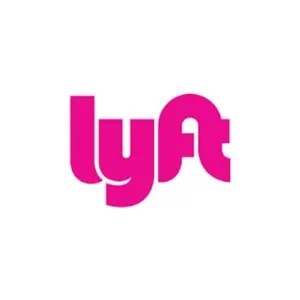Key Takeaways
- Uber has stricter driver screenings and vehicle inspections than Lyft.
- Uber allows direct 911 calls from the app, offering more immediate emergency assistance.
- Lyft has fewer reported incidents and lawsuits, indicating potentially safer rides.
- Both Uber and Lyft are committed to women’s safety with similar protective measures.
Is Uber or Lyft Safer? (The Quick Answer)
Uber is better than Lyft when it comes to driver screenings, vehicle inspection, and rider protection features. Lyft, on the other hand, has had fewer incidents and lawsuits. Both are neck and neck as far as female rider protection is concerned.
Tallying up the points from our comparison, Uber has the edge when it comes to safety.
Uber vs. Lyft: An In-Depth Safety Breakdown
It seems like the ridesharing industry can’t catch a break from scrutiny, with reports of harassment and assault incidents emerging every so often, highlighting the urgent need for safety improvements.
Here’s an in-depth look at the safety policies and track records of the two ridesharing giants we’re comparing:
Driver Screenings
Both Uber and Lyft conduct background checks on potential drivers using third-party companies like Checkr. Uber states that it runs these checks annually, while Lyft claims to run them periodically with no specific timeframe.
Both platforms screen for serious criminal offenses like sexual assault and murder. DUIs, drug charges, and multiple moving violations also disqualify applicants.
Having said that, the background checks Uber and Lyft run have their limitations. Applicants can falsify their Social Security numbers, and so their true criminal history may not surface.
Critics argue that fingerprinting should be mandatory for more reliable verification. Sadly, neither company has adopted this safety measure yet, with no hints of future implementation.
Background checks aside, Uber sets a minimum of one year of licensed driving experience—three years if you’re under 25 years old. Per contra, there are no specific driving experience requirements for Lyft drivers.
Note: Uber’s luxury services—like Uber Black—only use professional, commercially licensed drivers.
Bottom Line
While both services conduct similar background checks on paper, Uber’s annual checks and driving experience requirements result in more rigorous screening than Lyft’s undefined periodic checks and lack of mandated minimum experience.
Point for Uber.
Vehicle Inspection
Uber and Lyft don’t just vet drivers to ensure safety; they also vet their vehicles!
On the Uber side, annual vehicle inspections by certified mechanics are mandatory. This is to ensure components like brakes, tires, and lights are in good working order.
On the Lyft side, there isn’t an annual inspection requirement, which may allow more maintenance issues to go unnoticed over time.
As far as vehicle age, Uber allows models up to 15 years old (except in some markets with stricter regulations), while Lyft sets the maximum vehicle age at 20 years old.
It’s safe to say that the lower maximum age set by Uber results in newer, safer cars on the road.
Both rideshare services allow the use of rental vehicles, which raises some accountability concerns associated with short-term rentals.
To address these concerns, both services only allow the use of rentals that are part of an approved partnership—like Hertz and Avis—in the case of Uber or the Express Drive program in the case of Lyft. So we’d say they’re pretty comparable on this front.
Bottom Line
Uber’s vehicle inspection specifics, like the mandatory annual inspections and lower maximum car age, demonstrate greater safety consciousness than Lyft’s vaguer policies.
Another point for Uber.
Protection Measures
Uber and Lyft have several in-app safety features that offer users some peace of mind. This includes GPS tracking, emergency/panic buttons, and 24/7 response teams.
To be more specific, with Uber, you can share your trip details with any of your contacts. You can also use RideCheck to detect unusual stops or delays—Lyft is reportedly working on a similar feature.
Additionally, you can use the in-app emergency button to call 911. When you do so, the car’s make and model, GPS location, and license plate number are made available to 911 dispatchers.
Lyft also provides trip sharing and emergency ADT monitoring, but you can’t call 911 directly from the app. You’ll have to call from the app’s safety center—an extra step that could cost critical seconds in an emergency.
Bottom Line
Though both rideshare platforms have excellent rider protection measures in place, Uber edges this round as well by allowing direct 911 calls from the app.
Uber with the win again.
Reported Incidents
The latest safety report (2019 to 2020) from Uber shows that 3,824 riders reported the five most severe categories of sexual assault, ranging from “non-consensual kissing of a non-sexual body part” to rape. That’s down from the 5,981 incidents reported in 2017 to 2018.
Lyft’s latest report, which also happens to be their first and only report as of today, shows 4,158 reports of sexual assault from 2017 to 2019.
Regarding fatal physical assaults and traffic fatalities, the numbers in the latest reports were respectively 20 and 101 for Uber from 2018 to 2019, and four and 49 for Lyft in 2019.
Bottom Line
While the time periods differ to some extent, Uber self-reported a higher number of incidents than Lyft. This suggests a greater inherent risk for Uber riders.
First point for Lyft.
Lawsuits Record
As of 2023, there are 185 pending lawsuits alleging that “Uber failed to implement appropriate safety precautions to protect passengers, and that plaintiffs suffered sexual assault or harassment as a result.”
On the other hand, there have been 17 assault lawsuits filed against Lyft as of September 2022. The lawsuits claim the company not only failed to protect the victims but also to support them after their assaults.
Bottom Line
Once again, the time periods differ slightly, but it’s clear that Uber has faced way more lawsuits than Lyft—it’s been around longer, after all. This capitalizes on the previous comparison point and indicates a greater inherent risk with using Uber.
Lyft gets another point.
Women’s Safety
Both Uber and Lyft have implemented policies aimed at protecting female passengers since they face a high risk of harassment and assault.
For starters, Uber released specific guidelines for women’s rideshare safety. The company also has a 24/7 support team that’s trained to deal with sensitive issues like sexual assault. And the fact that you can call 911 directly from the Uber app, coupled with ADT monitoring, adds extra security.
Lyft is just as safe for female rideshare users as Uber. Not only can you see the driver’s name, picture, and car details, but you can also share your ride information with any of your contacts. Also, if there are unusual delays or stops, the app sends you a message to ensure you’re okay.
As long as you’re paying attention to your surroundings, you should be safe with either service. And if you feel uncomfortable in any way, both apps allow you to cancel your ride.
P.S. Did you know that there are rideshare services specifically for women? ChaufHER is an excellent example, connecting female drivers with female passengers.
Bottom Line
Both services seem to be doing their absolute best to ensure female passenger safety. We call it a draw.
A point for each.
Uber or Lyft: Conclusion
With four points for Uber and three for Lyft, it seems like Uber has the edge as far as rider safety. This doesn’t mean that Lyft isn’t safe by any means. It just means that Uber currently has more safety features than the competition.
This might change in the future, and who knows, maybe a whole new service will emerge with better safety features than both Uber and Lyft, or maybe taxi services will make a comeback!
What we know for sure is that whether you’re dealing with an Uber or Lyft driver, you must always be aware of your surroundings and call for help the moment you sense a whiff of danger.
Stay safe!







